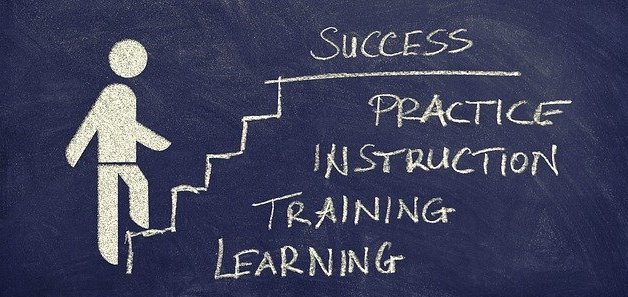Implementing a new electronic health record (EHR) software at your behavioral health organization is a huge undertaking.
Whether you are switching from one platform to another or transitioning from a paper records system to an EHR, implementation is a complex process with lots of moving parts.
The ways in which an EHR vendor implements its software can often make or break an implementation process.
Each EHR vendor implements its software a little differently, so it is important to investigate a vendor’s implementation methods before making a decision. You want to choose an EHR vendor whose implementation process is a good fit for your facility.
Often, a good fit relies on two factors:
- How a vendor plans to implement their EHR
- The level of customer service provided by the implementation team
Be mindful that there can be considerable variance across the industry when it comes to implementation.
As a result, we have identified three best practices that can indicate you are dealing with a competent and experienced EHR vendor.
Comprehensive Discovery Phase
The initial step in an implementation process is the discovery phase.
Here, an EHR vendor gathers all your facility’s documents and items that will need to be configured in their new platform. This is the time to make sure that all aspects of your operation are accounted for by the software.
Some examples of the items collected at this stage are:
- Forms
- Progress Notes
- Assessments
- Chart Layouts
- Reports
- Medication templates
- QA tasks
- Document Review
- Treatment Plans
- Staff User Accounts
- Location/Bed Charts
This is an opportunity for an EHR vendor to learn about your facility’s current processes.
To minimize the disruption of your staff during implementation, a vendor should make an effort to configure your new system as close to your facility’s current documentation as possible.
Skilled implementation teams not only adopt a facility’s methods, but attempt to improve them as much as possible. Some vendors may simply acquire documentation at this stage. Others will make an effort to uncover the shortcomings of your current methods as well.
A great way to identify the gaps in your facility’s existing processes is to run through the life cycle of a patient in your current system.
Showing an implementation staff how a patient moves from pre-intake, to admissions, to program transfers and discharges with different disciplines can help inform the best course of action for configuration and training.
An attentive implementation team also tries to understand your organization’s specific reasons, needs, and drivers for converting to a new EHR.
For example, it is a good sign if the vendor inquires about the pain points in your present EHR environment.
This suggests the implementation team is committed to transforming your EHR experience for the better, rather than just importing your imperfect system into their platform.
As a result, they can build an optimized system that makes users’ lives easier without straying too far from how your staff is used to doing things.

Established and Organized Training Process
Once an implementation team has configured your customized system, your facility will proceed to the User Acceptance Testing (UAT) period. Once the system passes UAT, training begins.
Every EHR vendor has their own training structure. However, effective implementation teams are flexible in their process. Ideally, your organization’s infrastructure will largely dictate how an EHR vendor trains your staff.
The most efficient training periods will cater to the specifics of your operation. Here are a few ways that an implementation team can promote the efficient and painless adoption of your facility’s new system.
Train Staff in Stages, Per Discipline
The staff of any mental health or addiction treatment center is best trained in groups based on their specific treatment types and EHR responsibilities.
In this way, the implementation team provides targeted and organized training for different types of employees on your staff.
This approach allows your staff to be trained with their peers who will be using the new system in the same way, which can promote a higher degree of communication during, and after, the training process.
Consider the alternative, where RNs, front desk staff, and billing staff are all trained simultaneously. The billing staff may check out during medical feature training, the RNs may check out during the patient intake sections, and so on.
Effective implementation teams deliver precise training to each type of employee so they are only exposed to the parts of the system that they will interact with in a real-world setting.
This prevents staff from getting overwhelmed by the size of an EHR, or becoming discouraged or disinterested from sitting through training that has nothing to do with their roles.
Provide Effective Training Documents
Ideally, an EHR vendor provides some form of on-site training.
However, this is typically the most short-lived aspect of the training process. Once the implementation team leaves, your facility will have to navigate EHR questions more independently and rely on any training documentation that was provided.
Experienced implementation teams provide your facility with training documents that can help employees continue to adopt and understand the new system after they are gone. These documents are also useful when catching new hires up to speed.
Training documentation can come in a variety of forms.
Competent EHR vendors supply your facility with diverse training materials to accommodate different learning styles among your staff. The more comprehensive the training documentation, the better chance there is for staff to clear up uncertainties autonomously.
A few examples of useful training documents are:
- Written Instructions
- Presentations
- Instructional Videos/Tutorials
- Real-Time Screen Recordings
- Webinars/Classes

Flexible and Understanding Implementation Team
The people that make up an implementation team are instrumental to the success of an implementation process. Interpersonal and communication skills are often just as important as technical knowledge during implementation.
One important factor that a vendor’s team should make an effort to understand and respect your staff’s apprehension about changing EHRs.
It is always difficult to learn a new way of doing things, especially if your staff has been using the same system for an extended period of time. Even if there are shortcomings in your facility’s current records system, a fear of the unknown can often be stronger than the obstacles of your current process.
Some EHR vendors make more of an effort to quell those fears than others. A skilled implementation staff is able to navigate a facility’s learning curve while mitigating disruption and frustration among staff.
They not only provide quality instruction on the new platform, but a general education of how the changes will benefit staff in the long run. Offering constant reassurance and context to why a given change is made goes a long way to getting staff to buy into the new system.

EHR Implementation with Sigmund
We hope this article has given you a better idea of what differentiates the best implementation teams from the rest.
We at Sigmund have many implementations under our belt.
The Sigmund team is committed to providing our clients with a structured, thorough, and collaborative implementation. There are many former behavioral health professionals on our team that have firsthand experience in the repercussions of a poor implementation experience.
Although everyone on our team would agree that the perfect implementation plan does not exist, we are very confident in our proven and flexible process. We take pride in working with our clients to create the absolute best platform for their needs.
As AURA, Sigmund’s enterprise software solution, continues to evolve into an increasingly robust platform, the implementation team is committed to innovating its procedures to make staff adoption as painless as possible.
For example, we have recently involved Sigmund Support staff in the implementation process. As a result, a facility is introduced to their eventual support representative from the start. This has been helpful in two ways.
First, the facility has more time to get comfortable with their support representative before support issues arise. Second, the support individual becomes familiar with a facility’s experience and learning curve during implementation.
This has resulted in improved trust and communication between customers and support staff, thus making the entire process more efficient.
Want to learn more about what it would take to transfer from your current system to AURA? Reach out to one of our knowledgeable professionals today! And if you’re curious to see our software solution in action, schedule a demo here!


